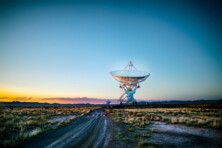
One might assume that risking your life by riding a powerful rocket into the cosmos for your nation would come with a hefty paycheck. However, for the majority of astronauts, this isn’t the reality. Space agencies understand that the allure of the job isn’t primarily financial; it’s the fulfilment of a lifelong dream shared by countless individuals. This may seem unfair, given the extensive training, personal sacrifices, and inherent dangers involved. Nevertheless, the breathtaking view of Earth from space – an experience many would give anything to have – serves as a unique form of compensation that money can’t buy.
Earlier, we reviewed the highest and lowest astronaut salaries in 2023. In this article, we have expanded our scope to include more space agencies and private companies and keep the information current.
The Evolving Concept of Astronauts: From Pioneers to Space Tourists
The term “astronaut” traditionally referred to highly trained individuals in space exploration. However, recent developments have challenged this definition, sparking debates about who truly deserves this title. Initially, astronauts were exclusively government employees with scientific or military backgrounds, undergoing rigorous training for space missions.
The landscape shifted in the 21st century with the advent of space tourism, beginning with Dennis Tito in 2001. Space tourism reached new heights in 2021 when billionaires Richard Branson and Jeff Bezos embarked on suborbital flights. Their self-awarded “astronaut wings” ignited controversy, questioning the legitimacy of such brief journeys compared to career astronauts’ extended missions.
Today, the definition of an astronaut varies widely, from those with rigorous training and scientific contributions to anyone who has crossed Earth’s atmospheric threshold. This debate touches on fundamental questions about the democratization of space travel, the value of scientific expertise versus financial capability, and the future of human space exploration.
As space travel evolves, so will the role and definition of astronauts. Whether government-trained scientists, wealthy space tourists, or future ordinary citizens, those venturing beyond Earth’s atmosphere will continue to shape our understanding of what it means to be an astronaut in the modern era.
Civilian Astronaut Salary
NASA (National Aeronautics and Space Administration)
NASA pays its civilian astronauts using the General Service (GS) pay scale, the standard system for U.S. government civilian employees. This scale includes various grades and steps based on experience, responsibility, and expertise. Federal Pay, a trusted source for government salary information, suggests astronauts typically fall within the GS 12-13 range, with annual salaries between $84,365 and $115,079 according to 2024 GS rates. Interestingly, there are discrepancies in reported astronaut salaries. NASA’s official website states a higher 2024 astronaut salary of $152,258 annually, suggesting additional factors may influence the final compensation package beyond the standard GS scale.
Historical data adds another layer of complexity. A 2020 NASA job listing for astronaut candidates on the official government employment website offered a salary range of $104,898 to $161,141, corresponding to GS levels 13-14. These varying figures highlight potential salary adjustments based on experience, qualifications, and NASA’s specific needs at different times.
The diversity in reported salaries underscores the complexity of astronaut compensation. While the GS scale provides a general framework, additional allowances, bonuses, or specialized pay structures may exist for this unique profession. It’s also possible that salary ranges are periodically adjusted to remain competitive and attract top talent to the astronaut program.
ESA (European Space Agency)
ESA astronaut salaries are determined by factors including rank, country of origin, and experience. While generally lower than NASA’s, ESA salaries are tax-exempt in the astronaut’s home country, potentially increasing take-home pay. This tax exemption is a significant benefit that can offset the apparent salary difference between ESA and NASA astronauts.
ESA’s salary structure has three main levels: A2 (entry-level), A3 (post-basic training), and A4 (post-first spaceflight). As of 2024, monthly salaries range from £5,019.45 to €6,251.51 for A2, £6,194.65 to €7,713.99 for A3, and £7,199.16 to €8,964.10 for A4. These levels reflect the progression of an astronaut’s career and the increasing responsibilities they take on.
When converted to US dollars, annual salaries range from $77,748-$81,336 for A2, $95,964-$100,360 for A3, and $111,492-$116,628 for A4. These figures represent base salaries and exclude additional benefits or mission allowances. It’s important to note that astronauts may receive extra compensation for specific missions or duties, which can significantly increase their overall earnings.
In addition to their base salaries, ESA astronauts receive comprehensive benefits packages. These typically include health insurance, life insurance, pension plans, and allowances for housing and education. The agency also provides extensive training and development opportunities, which can be considered a form of non-monetary compensation.

Space X
SpaceX, Elon Musk’s innovative space venture, made history in 2020 with its first crewed mission using the Dragon capsule. Since then, SpaceX has regularly transported astronauts to and from the International Space Station (ISS), showcasing its ability to conduct manned missions in Earth’s orbit.
Although SpaceX transports NASA astronauts, it hasn’t established its own astronaut program yet. The company continues to rely on NASA’s experienced astronauts for crewed missions, exemplifying a novel partnership between private and government entities in space exploration. NASA aims to return humans to the moon by 2025 at the earliest, collaborating with SpaceX as part of the Artemis program. This mission will involve NASA astronauts, strengthening the alliance between the two organizations and potentially paving the way for future deep space missions. As SpaceX’s ambitions expand beyond Earth orbit and lunar missions, many wonder about the company’s plans for its own astronaut program. It’s currently unclear whether SpaceX will develop its own astronaut training and selection process.
Given Musk’s commitment to interplanetary travel, particularly establishing a human presence on Mars, experts believe SpaceX will likely train its own astronauts eventually. This step would be crucial for achieving the company’s long-term objectives of deep space exploration and colonization. As a well-funded private enterprise, if SpaceX creates its own astronaut corps, the compensation could potentially surpass the $146,000 salary cap currently set for NASA astronauts, reflecting both its private sector status and the challenges of extended interplanetary missions.
Military Astronaut Salary
US (NASA)
Many NASA astronauts have military backgrounds, which significantly influences their employment status. These individuals remain active in their military roles while serving at NASA, maintaining their military pay and benefits. This arrangement enables them to pursue space exploration without forfeiting the financial security of their military careers. NASA’s astronaut selection process is rigorous, often favoring military officers due to their extensive experience. Successful candidates typically need either three years of relevant professional experience or considerable flight expertise, often defined as a minimum of 1,000 hours as Pilot-In-Command, with at least 850 hours in high-performance jet aircraft. These strict criteria ensure NASA recruits individuals with both physical capabilities and crucial decision-making skills essential for space missions.
US military astronauts’ salaries vary widely based on their military rank. For instance, US Navy Commander Matthew Dominick earns $98,395.20 annually, while US Air Force Brigadier General Raja Chari receives $127,666.80 per year. These examples demonstrate the significant salary differences among astronauts, which depend on their military rank and service duration.
Beyond base salaries, military astronauts retain a comprehensive benefits package from their active military status. This includes healthcare, various insurance options, and pension plans. These additional benefits greatly contribute to the financial security of military astronauts, providing a safety net for their high-risk careers in space exploration.
CMSEO (China)
China’s astronaut program, officially known as the taikonaut program, maintains a level of opacity when it comes to disclosing salaries. This secrecy is partly due to the program’s unique recruitment strategy, which draws almost exclusively from the ranks of the People’s Liberation Army (PLA). The lack of transparency extends to the specifics of astronaut compensation, making it challenging to pinpoint exact figures.
However, we can gain some insight by examining the pay structure within the PLA Air Force, which serves as a primary source for taikonaut candidates. As of 2023, according to a report by Newsweek, the PLA Air Force offers a monthly salary of approximately $1,500 for individuals filling ‘professional and technical roles’ who possess an undergraduate degree. For those with more advanced education, specifically a graduate degree, the monthly compensation increases slightly to around $1,640.
While these figures provide a baseline understanding, it’s important to note that they may not directly correspond to taikonaut salaries. The specialized nature of space exploration and the prestige associated with the role could potentially lead to different compensation packages. Additionally, factors such as mission-specific bonuses, hazard pay, or other non-monetary benefits might contribute to the overall remuneration for China’s space explorers, though such details remain undisclosed to the public.
Comparing Salaries: Astronauts and Other Space Industry Professions
Beyond the flashiness and prestige associated with their profession, astronauts selected for public space programs are, in essence, governmental employees and compensated accordingly. This means that their salaries are not significantly different from those of other highly-trained personnel who remain earth-bound. In fact, it’s not uncommon for astronauts to earn less than program supervisors or executives within the same organization. At NASA, for instance, these higher-level positions typically fall into the GS-14 to GS-15 pay grade range, which can surpass the compensation of active astronauts. This pay structure reflects the complex balance between the unique demands of space exploration and the standardized pay scales of government employment. However, it’s worth noting that the financial landscape shifts considerably when we look at the private sector of space exploration.
According to some reliable reports, there’s a stark contrast in compensation between public and private space organizations. At NASA, engineer salaries span from $54,557 to $73,038, with variations based on academic qualifications and experience. In comparison, private companies offer significantly higher remuneration. SpaceX, for example, lists aerospace engineer salaries ranging from $95,000 to $175,000 on their job board, with senior software engineers potentially earning up to $220,000. The situation at Blue Origin is even more lucrative for engineers, with starting salaries often beginning at $110,000 or $120,000 and reaching as high as $324,000 for a chief engineer position. The disparity extends to non-technical roles as well, showcasing the wide spectrum of compensation in the private space sector. Entry-level pay for these positions varies dramatically, from approximately $42,000 for an early-career administrative role at Blue Origin to an impressive $260,000 for a senior environmental lawyer at SpaceX. This substantial difference in pay scales underscores the financial allure of private space companies and highlights the evolving dynamics of the space industry job market.








